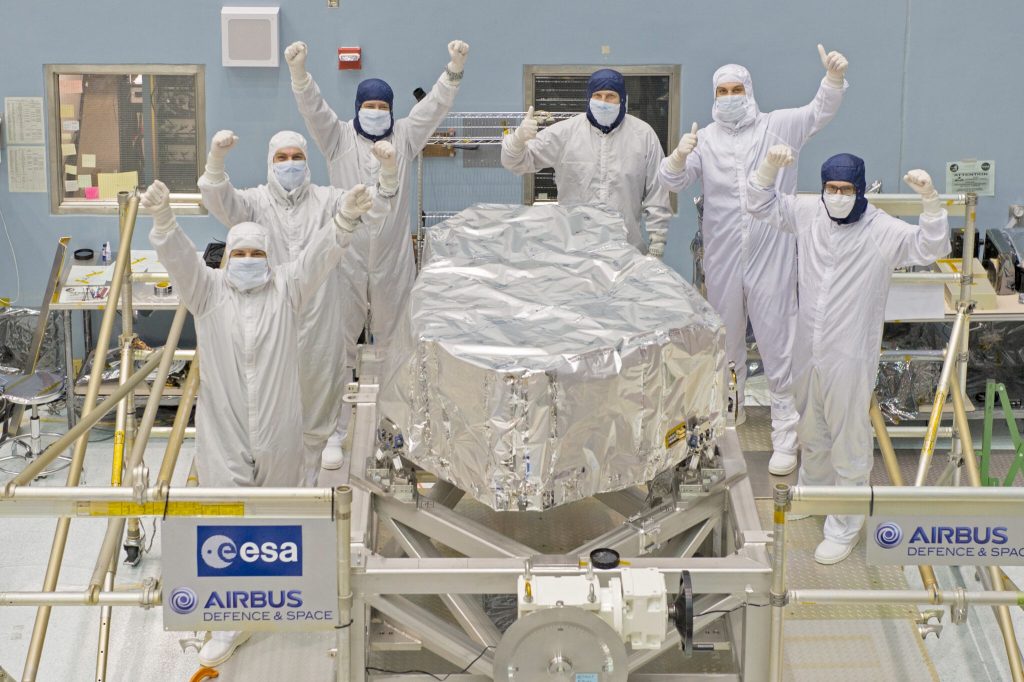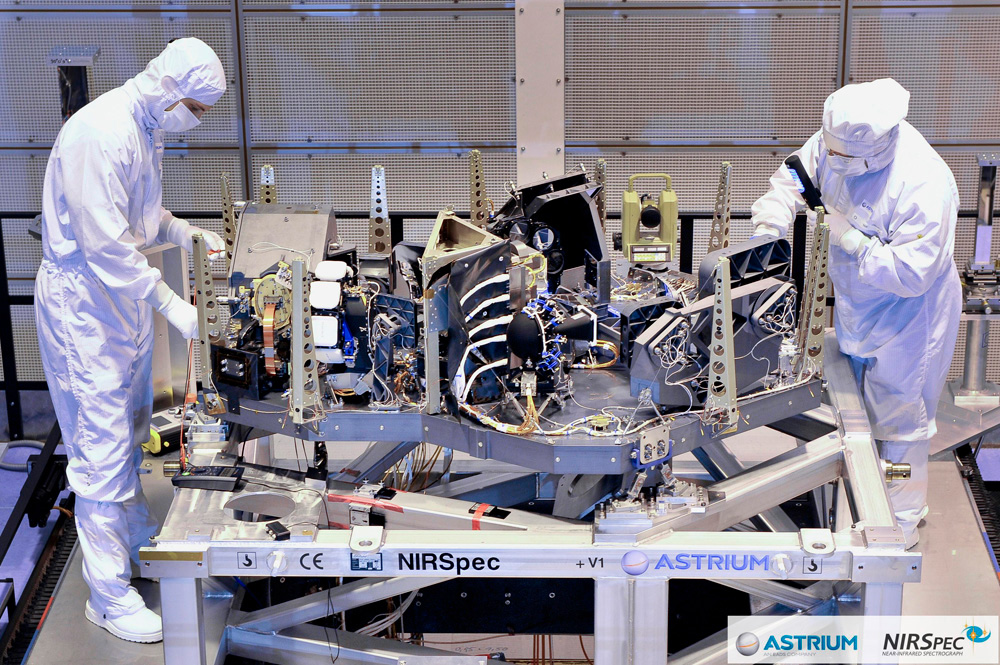As progress continues in Kourou, we check in with another one of Webb’s instruments, the Near-Infrared Spectrograph (NIRSpec), and its scientific lead, Pierre Ferruit:
“It was more than 20 years ago that the European Space Agency (ESA) teamed up with NASA and the Canadian Space Agency to build the amazing James Webb Space Telescope! The NIRSpec instrument is one of the four elements contributed by ESA to the Webb mission.
“NIRSpec was designed and built for ESA by a consortium of European industrial companies led by Airbus Defence and Space, Germany, with some components provided by NASA, making it a truly international effort, just like Webb itself!
“Measuring approximately 1.9 m x 1.3 m x 0.7 m, NIRSpec is the largest instrument on board Webb. Yet it weighs less than 220 kg. Built to withstand the tremors of a rocket launch and the rigors of space, it is a marvel of technology and engineering like many things in Webb. Its optical bench and most of its mirrors are made of an extremely hard and stable ceramic material called silicon carbide. European industry has become a master of the craft of manufacturing and using this very special material for building space telescopes and instruments like NIRSpec.


“Now, let’s talk a little bit about science with NIRSpec and in particular about ‘spectra.’ A key role of NIRSpec in the Webb mission is to allow scientists to study in greater detail the properties of faint galaxies detected in images such as those from NIRCam. For that, NIRSpec will split the infrared light from these galaxies into different shades of infrared and generate what we call spectra. Analysis of these spectra will tell us how distant these galaxies are, what type of stars they contain, what is the relative abundance of life-giving elements such as oxygen and carbon in their interstellar gas, and much more. Each spectrum is a small treasure trove of information that will help scientists understand how the first stars and galaxies formed when the universe was only a few hundred million years old!
“Since this is only one example of what NIRSpec can do, you will understand how excited we are now that Webb, with NIRSpec cozily installed at the back of the primary mirror, is being prepared for launch. After rigorous tests on Earth, NIRSpec is ready! Go Ariane, go!”
—Pierre Ferruit, ESA Webb project scientist, and the NIRSpec team
By Jonathan Gardner, Webb deputy senior project scientist, NASA’s Goddard Space Flight Center
And Alexandra Lockwood, project scientist for Webb science communications, Space Telescope Science Institute
